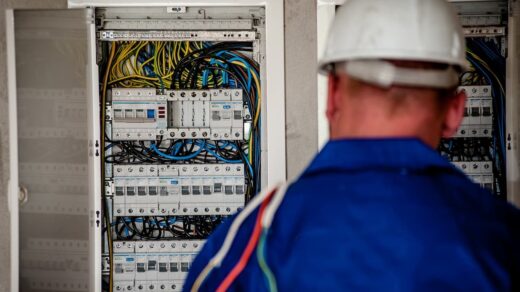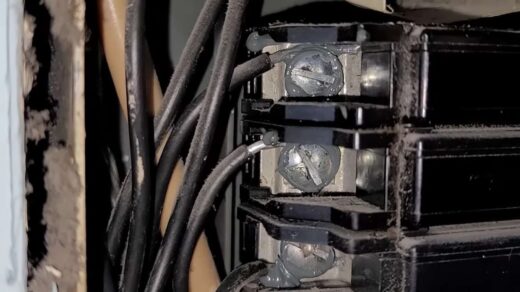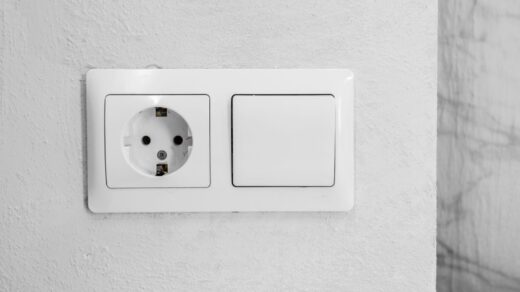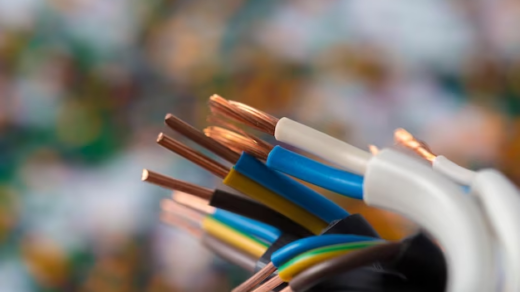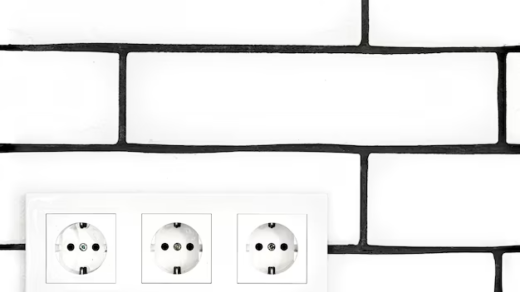In an era where homes are brimming with advanced gadgets, smart appliances, and the ever-evolving demand for electricity, the heartbeat of every home’s electrical system – the electrical panel – is often pushed to its limits. The older panels, designed for yesteryears’ electrical needs, might find it challenging to cope with the digital age’s growing power requirements. Whether you’ve experienced frequent circuit breaker trips, noticed flickering lights, or are planning a home renovation, considering a panel upgrade is essential. In this article, we’ll guide you through the intricacies of upgrading a panel, ensuring safety, efficiency, and compatibility with modern living standards. Join us as we illuminate the pathway to a more robust and reliable electrical infrastructure for your home.
Understanding the Importance of a Modernized Electrical Panel
The electrical panel is frequently dubbed the “nucleus” of a home’s power network. Its central role is to channel electricity to different sections of the house. Given the rapid advancements in technology and the increased dependence on digital gadgets and state-of-the-art appliances, it’s imperative to keep the electrical panel updated. By doing so, homeowners can unlock a myriad of benefits:
1. Prioritizing Safety Above All
An often-underestimated benefit of upgrading the electrical panel is the considerable boost in safety. This includes:
Prevention of Overheating and Electrical Fires:
- Aging panels, particularly those lacking regular upkeep, are prone to overheating;
- By upgrading, homeowners can ensure compliance with contemporary safety guidelines, dramatically lowering the risk of electrical fires.
Mitigation of Short Circuit Risks:
- The design of contemporary panels incorporates advanced safety features;
- These designs are crafted to significantly reduce the probability of electrical mishaps, ensuring a safer home environment.
2. Catering to the Needs of the Modern Household
As we pivot to a technologically driven world, our homes are increasingly packed with advanced gadgets and appliances. An updated electrical panel becomes pivotal in:
Empowering Advanced Appliances:
- Modern-day appliances, with their advanced features, often have a greater electrical appetite;
- A renovated panel can efficiently cater to these needs, preventing potential overloads and ensuring optimal appliance performance.
Delivering Consistent Power:
- Inconsistencies in power supply can lead to malfunctions in devices;
- A modern electrical system guarantees a stable power flow, ensuring devices run seamlessly without hitches.
3. Elevating Your Property’s Appeal and Value
Apart from the direct utility benefits, an upgraded electrical panel can enhance the market value and allure of a property:
Enticing Potential Home Buyers:
- A modernized electrical panel is a magnet for potential buyers;
- Buyers are on the lookout for homes that minimize the need for future renovations, making this an attractive feature.
Reaping Insurance Perks:
- Some insurance providers recognize the reduced risks associated with modern electrical systems;
- Consequently, they might offer favorable premiums to homeowners with updated electrical setups, leading to potential savings in the long run.
A Comprehensive Examination of Identifying When Your Electrical Panel Requires an Upgrade
Understanding the signs indicating that your electrical panel is approaching its limits or showing signs of malfunction is not only pivotal for safety but also to ensure your home operates optimally. An outdated or malfunctioning electrical panel presents several dangers. This guide will provide homeowners with an exhaustive list of red flags to watch out for:
1. Continuous Circuit Breaker Challenges:
- Frequent Tripping Phenomena: Experiencing recurrent circuit breaker trips hints at a potential overload in the panel or a deeper fault in the system;
- Safety Concerns Linked to Tripping: While many see continuous tripping as a mere annoyance, it’s a serious issue that might foreshadow potential fire hazards;
- Recommendation: At the first sign of recurrent tripping, seek the expertise of a licensed electrician. Immediate intervention can avert safety threats.
2. Assessing the Lifespan and Performance of Your Electrical Panel:
- Is an Upgrade Due?: Electrical panels that have been in service for over 20 years may be both inefficient and pose safety concerns. As panels age, they might not meet the latest safety guidelines;
- Evolving Safety Measures: Electrical safety norms undergo continuous improvements. Panels that were installed many years ago may not align with today’s more rigorous safety benchmarks;
- Tip: Periodically check your panel’s age. Stay informed about the latest safety protocols and ensure your panel is compliant.
3. Erratic Power Delivery:
- Symptoms to Watch: Be vigilant about sporadic lighting patterns, like light flickering, as this can suggest inconsistent power delivery which can potentially harm sensitive electronics;
- Voltage Stability Concerns: Experiencing stark power surges or abrupt reductions? This could signify a need to scrutinize your panel and the overall electrical structure;
- Insight: Inconsistent power delivery can disrupt your routine and decrease the operational life of your electronic gadgets.
4. Adapting to Power-Intensive Appliances:
- Increased Power Demand: Introducing power-guzzling appliances or systems, such as modern HVAC setups or premium spas, can strain outdated panels;
- Understanding Capacity: Before integrating any power-intensive equipment, familiarize yourself with the limits of your current electrical setup;
- Recommendation: Partner with a qualified electrician. Before adding any high-consumption device, assess if your current panel can accommodate the added load or if an upgrade is imminent.
Steps for Upgrading Your Electrical Panel
Prior to embarking on the journey of upgrading your electrical panel, it becomes crucial to undertake a meticulous assessment of the power requirements within your household. This pivotal preliminary action ensures the careful selection of a panel that is both suitably sized and adequately equipped to efficiently meet your electrical demands. Here’s a holistic strategy to guide you through this process:
Determining Your Power Needs:
- Compile a comprehensive inventory of all electrical appliances and devices within your residence;
- Take note of the specific amperage and voltage prerequisites for each individual appliance;
- Summate the cumulative amperage requirements to establish the total electrical load;
- Contemplate any potential future enhancements or augmentations to your electrical infrastructure.
Opting for the Ideal Panel
The selection of the correct electrical panel is of utmost significance in ensuring a secure and efficient distribution of power throughout your domicile. Residential panels typically fall within the range of 100 to 200 amps, and the decision hinges upon your previously computed power requirements and prospective expansions. Here’s what to keep in mind:
Choosing the Right Panel:
- Assess your total amperage requirements and choose a panel that can comfortably handle the load;
- Consider future growth and opt for a panel with extra capacity if needed;
- Ensure the panel meets local building codes and safety standards.
Disengage the Electrical Supply
Prioritizing safety remains paramount when dealing with electrical systems. Prior to commencing any electrical tasks, it is imperative to deactivate the primary power source to your residence. Allow me to elucidate the procedure:
Turning Off the Main Power:
- Locate your home’s main circuit breaker or fuse box;
- Switch off the main breaker to cut off power to the entire house;
- Verify that there is no electricity flowing by testing a few circuits and outlets with a voltage tester.
Remove the Old Panel
Carefully removing the old electrical panel is a crucial step in the upgrade process. This requires precision and attention to detail to prevent damage or accidents. Here’s a step-by-step guide:
- Label all existing circuits to ensure correct reconnection later;
- Carefully disconnect the wires from the old breakers one by one;
- Remove the old panel from the wall or enclosure;
- Inspect the wiring for any signs of wear or damage, replacing if necessary.
Install the New Panel
With the old panel removed, it’s time to install the new one. Proper installation ensures that your electrical system functions safely and efficiently. Here’s what you need to do:
- Securely mount the new panel in the designated location, ensuring it complies with local regulations;
- Reconnect the circuits one by one, referring to your labeled wires;
- Tighten all connections to prevent loose wires;
- Follow the manufacturer’s instructions for any specific installation requirements.
Test the System
After completing the installation, it’s crucial to thoroughly test the electrical system to ensure everything is functioning correctly. Here’s a checklist to follow:
- Gradually turn the power back on at the main breaker;
- Test each circuit and outlet in your home to ensure proper functioning;
- Look out for any unusual noises, sparks, or signs of overheating;
- If you encounter any issues, immediately turn off the power and consult a professional electrician.
Prioritizing Safety Measures
Disable the Main Power Supply
When it comes to electrical tasks, the paramount consideration is safety. Ensuring the deactivation of the primary power source in your home is absolutely essential before commencing any electrical endeavor. This fundamental precautionary step is highly effective in preventing accidents and reducing the risk of electrical shocks.
Employ Insulated Instruments
The utilization of insulated equipment substantially diminishes the probability of electrical shock while engaged in electrical system maintenance. These tools are furnished with handles crafted from non-conductive materials, affording an additional stratum of security.
Wear Protective Gear
Protective gear is your shield against potential hazards. When upgrading your electrical panel, make sure to wear the following:
Recommended Protective Gear:
- Rubber gloves to insulate against electric shocks;
- Safety goggles to shield your eyes from debris and sparks;
- Appropriate clothing that covers your body to minimize exposure.
Avoid Working in Wet Conditions
The compatibility of water and electricity is precarious, with moisture substantially amplifying the peril of electrocution. Hence, it is imperative to refrain from engaging in electrical panel work during conditions marked by dampness or wetness. If the environment is damp, it is advisable to exercise patience until it dries before embarking on any electrical endeavor.
Distinguishing a Professional Electrician from a DIY Endeavor
The choice between embarking on an electrical project independently and enlisting the services of a seasoned electrician hinges on a multitude of considerations. While the prospect of a DIY undertaking may appear cost-effective and stimulating, electrical undertakings carry inherent hazards and necessitate a specialized skill set.

Benefits of Enlisting a Proficient Electrician:
- Possession of Vital Equipment: A proficient electrician is always equipped with the indispensable tools and devices tailored specifically for tasks. This not only ensures precision but also guarantees the safe and efficient execution of the job;
- Extensive Familiarity with Local Regulations: Seasoned electricians maintain a thorough understanding of the ever-evolving landscape of local electrical codes and standards. Engaging their services grants homeowners the confidence that their projects, whether installations or repairs, will consistently align with these mandates, thereby mitigating any prospective legal entanglements;
- Assurance of Quality through Warranty: A notable benefit of engaging professional electricians is the warranty they often provide on their services. This warranty acts as a testament to their confidence in the work they deliver and offers clients peace of mind;
- Prioritizing Safety: Mishandling tasks can lead to serious accidents or even the outbreak of fires. Experts bring their specialized knowledge to bear, effectively managing these risks, thereby safeguarding not only the property but also the well-being of its inhabitants.
Tips for Homeowners Considering a DIY Approach:
- Educate Yourself: If leaning towards a DIY approach, make sure to gather as much knowledge as possible. There are numerous online resources and workshops available to guide novices;
- Prioritize Quality Tools: Never cut corners when it comes to the quality of your tools. Opting for high-grade equipment can significantly mitigate the chances of accidents;
- Prior to Commencing Electrical Tasks, Always Disable the Power Supply: Prior to engaging in any electrical work, make it a steadfast rule to confirm that the power supply has been switched off. This straightforward precautionary measure can avert numerous potential mishaps;
- Know Your Limits: Recognize when a task is beyond your skill set. In such cases, it’s advisable to consult or hire a professional.
Conclusion
Enhancing your electrical panel represents a commitment to the safety, effectiveness, and overall worth of your residence. Although it is possible for individuals with electrical expertise to undertake this task independently, a considerable number of homeowners opt for the reassurance of engaging a certified expert. Irrespective of the path you decide to take, it is imperative to consistently place safety and compliance with local regulations at the forefront of your priorities.

